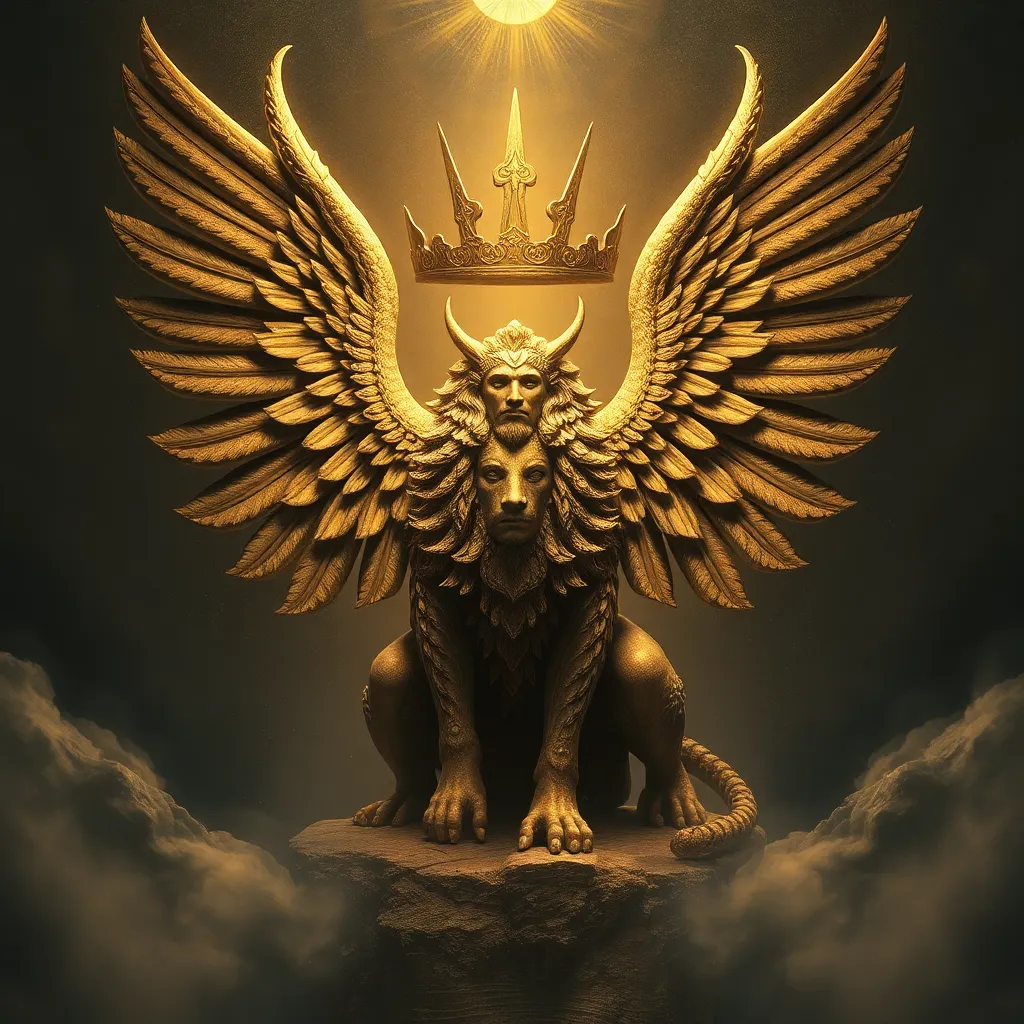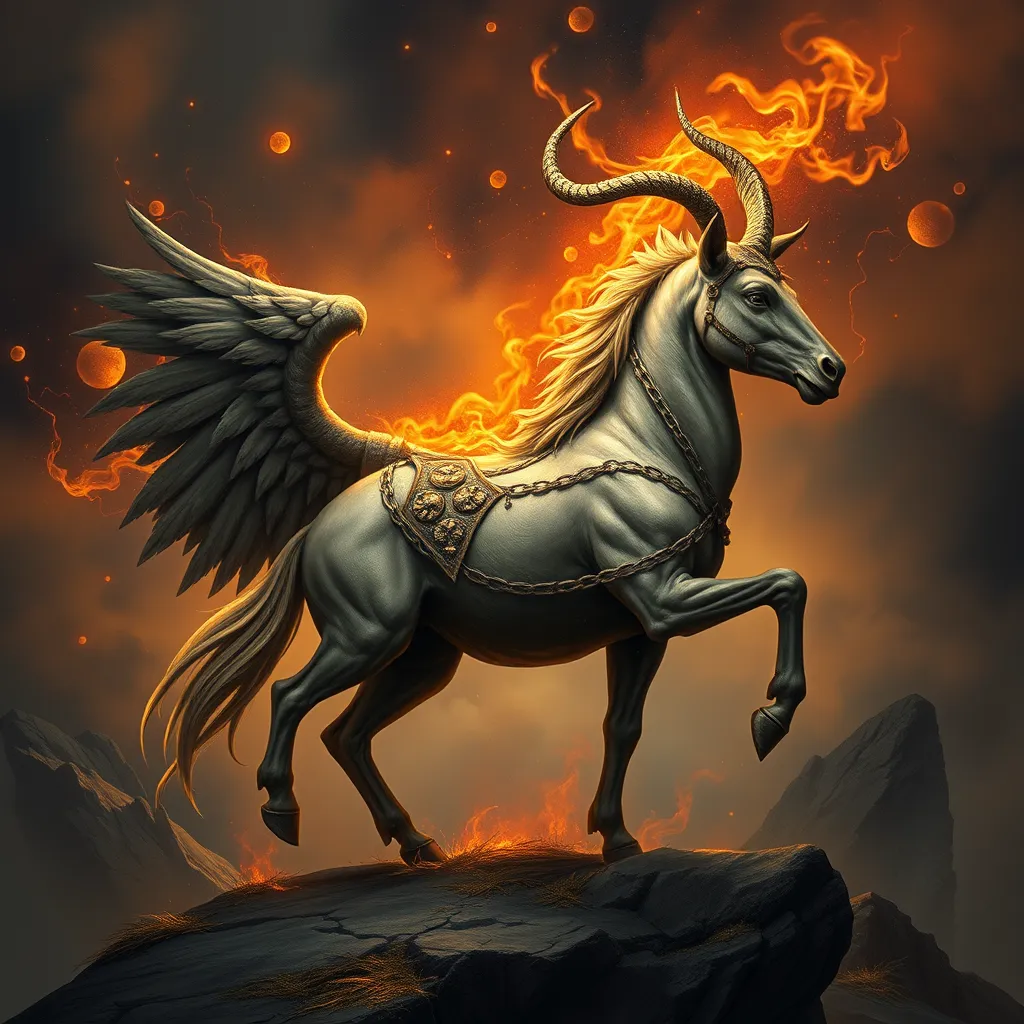The Lamassu in the Bible: Exploring its Possible Influence on the Cherubim
I. Introduction
The Lamassu and Cherubim are two fascinating entities that have intrigued scholars for centuries. The Lamassu, a mythical creature with a lion’s body, wings, and a human head, originates from ancient Mesopotamian cultures, while the Cherubim are celestial beings found in the Hebrew Bible, often associated with the presence of God. Understanding the connections between these two figures is critical for a more comprehensive study of ancient Near Eastern iconography and its influence on biblical texts.
This article aims to explore the historical, cultural, and theological implications of the Lamassu and Cherubim relationship, shedding light on how these entities may have influenced each other within their respective contexts.
II. Historical Context of the Lamassu
The Lamassu has its roots in ancient Mesopotamian culture, particularly within the Assyrian and Babylonian empires. These creatures were often placed at the entrances of palaces and temples, serving both decorative and protective functions.
A. Origins and significance in ancient Mesopotamian culture
The Lamassu emerged around the 9th century BCE and became a symbol of power and protection for kings and deities. They were believed to ward off evil and were often depicted in monumental sculptures.
B. Description and symbolism of the Lamassu
Typically, a Lamassu is depicted with the body of a bull or lion, the wings of an eagle, and the head of a human. This hybrid form symbolizes strength, speed, and wisdom. The Lamassu’s imposing stature created a sense of awe, serving as guardians against malevolent forces.
C. The role of Lamassu in Assyrian and Babylonian architecture
Lamassu statues were often positioned at gateways and entrances, emphasizing their protective role. These sculptures were intricately carved and adorned, reflecting the artistry and religious beliefs of the time.
III. The Cherubim in Biblical Texts
In contrast to the Lamassu’s origins, the Cherubim are primarily mentioned within the context of the Hebrew Bible, characterized by their unique attributes and roles.
A. Definition and characteristics of Cherubim in the Bible
Cherubim are often depicted as winged creatures associated with the divine presence. They are described in various biblical texts as having multiple faces and being placed at the throne of God.
B. Key biblical passages mentioning Cherubim
- Genesis 3:24: The Cherubim guard the entrance to the Garden of Eden.
- Exodus 25:18-22: Instructions for making the Cherubim for the Ark of the Covenant.
- Ezekiel 10: The vision of the Cherubim in Ezekiel’s prophetic writings.
C. Symbolic meanings associated with Cherubim
Cherubim symbolize divine guardianship, holiness, and the connection between God and humanity. They often represent the manifestation of God’s glory.
IV. Similarities Between the Lamassu and Cherubim
Despite their distinct cultural origins, the Lamassu and Cherubim share several notable characteristics.
A. Physical attributes and artistic representations
Both entities possess hybrid forms that combine human and animal features, representing strength and divine authority. Artistic depictions of both often emphasize their majestic and intimidating nature.
B. Functions and roles in their respective cultures
Both the Lamassu and Cherubim serve protective roles—guarding sacred spaces and serving as intermediaries between the divine and human realms.
C. Thematic connections: guardianship and divine presence
The themes of guardianship and divine presence are prevalent in both the Lamassu’s role in Mesopotamia and the Cherubim’s function in biblical texts, suggesting a shared cultural understanding of divine protection.
V. Cultural Exchange Between Mesopotamia and Ancient Israel
The ancient Near East was a melting pot of cultures, and interactions between Mesopotamian and Hebrew civilizations were common.
A. Historical interactions between Mesopotamian and Hebrew cultures
Throughout history, the Israelites encountered various Mesopotamian empires, leading to cultural exchanges that influenced their literature, art, and religious practices.
B. Influence of Mesopotamian art and religion on biblical texts
Many scholars argue that Mesopotamian art, mythology, and religious practices had a significant impact on the formation of biblical texts, including the descriptions and roles of divine beings.
C. The potential for cross-cultural symbolism
The similarities between the Lamassu and Cherubim suggest a potential for cross-cultural symbolism, where shared themes of guardianship and divine presence transcend specific cultural contexts.
VI. Scholarly Interpretations and Debates
The connection between the Lamassu and Cherubim has prompted various scholarly interpretations and debates.
A. Overview of different scholarly perspectives on the influence of Lamassu on Cherubim
Some scholars propose that the Lamassu directly influenced the development of Cherubim iconography, while others argue that both were part of a broader ancient Near Eastern tradition.
B. Arguments for and against the direct influence hypothesis
Proponents of the direct influence hypothesis cite similarities in form and function, while skeptics point to differences in cultural context and theological significance.
C. Examination of archaeological evidence supporting these theories
Archaeological findings, such as inscriptions and artifacts, provide critical evidence for understanding the cultural dynamics between these entities and their respective civilizations.
VII. Theological Implications of the Lamassu-Cherubim Connection
The relationship between the Lamassu and Cherubim raises important theological questions regarding the nature of divine beings.
A. Understanding the nature of divine beings in biblical theology
This connection invites a reexamination of how divine beings are conceptualized in biblical theology, particularly in terms of their roles and attributes.
B. The impact of these beings on worship and spirituality
The presence of Cherubim in worship settings, such as the Temple in Jerusalem, underscores their significance in spiritual practices and the understanding of God’s protection.
C. Relevance of this connection in contemporary theological discussions
In contemporary theological discussions, the exploration of the Lamassu-Cherubim connection provides insights into how ancient beliefs continue to inform modern understandings of divinity.
VIII. Conclusion
In summary, the examination of the Lamassu and its potential influence on the Cherubim reveals substantial connections between these two fascinating entities. Their roles as divine guardians, coupled with their striking physical representations, highlight a shared cultural heritage that transcends specific historical contexts.
Understanding these connections has significant implications for the study of biblical iconography and ancient Near Eastern cultures, encouraging further exploration of the interactions and exchanges that shaped these ancient civilizations.
Future research could delve deeper into the archaeological and textual evidence of cross-cultural influences, providing a richer understanding of how the Lamassu and Cherubim reflect the broader themes of divinity and protection in human history.



